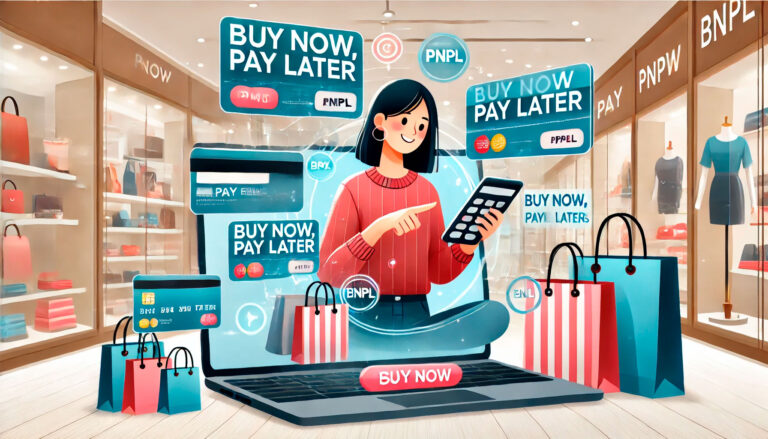
In a competitive financial market, banks are constantly seeking new ways to attract customers and distinguish themselves from their rivals. One strategy that has gained popularity in recent years is the introduction of cashback programs for borrowers. These programs, which offer a percentage of cash back on mortgage payments, personal loans, or other forms of credit, can seem like a tempting incentive for borrowers looking to save money. However, as with any financial product, it’s important to evaluate whether these cashback programs are truly beneficial or merely a clever marketing strategy designed to lure in unsuspecting consumers. In this article, we will explore the pros and cons of bank cashback programs for borrowers, helping you determine whether they offer real value or if they are simply a tactic to boost bank profits.
How Bank Cashback Programs Work
At their core, bank cashback programs are designed to reward borrowers for taking out loans or making timely payments. These programs typically work by offering borrowers a percentage of their loan balance or monthly payments back in the form of cash. The cashback can be applied to the loan itself, used to cover other expenses, or deposited directly into the borrower’s account. Cashback offers may vary based on the type of loan, the financial institution, and the borrower’s payment history, but they generally fall into one of two categories:
- Cashback on loan origination: Some banks offer cashback as an upfront reward when a borrower takes out a mortgage or personal loan. This cashback is typically a fixed amount or a percentage of the loan value, and it may be paid directly to the borrower at the time of the loan’s approval.
- Cashback for timely payments: Other banks offer cashback rewards to borrowers who make regular, on-time payments over a specified period. In these cases, the cashback may be awarded as a lump sum after a certain number of payments have been made, or it may be offered as a smaller, recurring payment for each successful on-time payment.
While these programs sound appealing at first glance, it’s essential to understand the full scope of the terms and conditions to determine if they’re genuinely beneficial or just a marketing tool.
The Benefits of Bank Cashback Programs
For borrowers, cashback programs can offer several advantages, particularly if the conditions are favorable. Below are some of the potential benefits of participating in a cashback program:

1. Immediate Financial Relief
One of the most attractive aspects of cashback programs is the immediate financial relief they can provide. If a borrower receives cashback at the time of loan origination, they can use that money to cover initial costs, such as closing fees, home improvements, or other personal expenses. This can help ease the financial burden of taking out a new loan and reduce the overall cost of borrowing.
2. Incentive to Make Timely Payments
Cashback programs that reward borrowers for making on-time payments can provide an additional incentive to stay on track with loan obligations. For individuals who may struggle to consistently make their payments, the promise of receiving cashback for doing so can help reinforce good financial habits. This added motivation can lead to fewer missed payments, improved credit scores, and more positive financial behavior.
3. Reduced Loan Costs Over Time
In some cases, cashback rewards may reduce the overall cost of the loan. For example, a borrower who receives cashback on regular monthly payments may effectively lower their total interest costs. Even a small percentage of cashback over the life of a loan can accumulate to a significant amount, helping the borrower save money in the long run.
4. Flexibility in Using the Cashback
Many cashback programs allow borrowers to use their cashback rewards however they see fit. This flexibility is particularly appealing for individuals who need extra funds for home repairs, debt consolidation, or personal expenses. The freedom to apply cashback in a way that suits their financial needs can make the loan process feel more personalized and less restrictive.

The Drawbacks of Bank Cashback Programs
While cashback programs may seem beneficial at first, they are not without their drawbacks. In some cases, these programs may be more of a marketing strategy than a genuine benefit to the borrower. Here are some of the potential disadvantages to keep in mind:
1. Higher Interest Rates or Fees
One of the main ways banks offset the costs of offering cashback is by charging higher interest rates or adding fees to the loan. Borrowers who are enticed by cashback rewards may find that the additional costs associated with the loan outweigh the benefits of the cashback. For instance, a borrower who receives cashback on a mortgage but faces a higher interest rate over the life of the loan could end up paying more in total than if they had opted for a loan without cashback but with a lower interest rate.
2. Cashback Limits and Conditions
Cashback programs often come with limitations and conditions that can make it difficult for borrowers to fully benefit. For example, some banks may only offer cashback after a borrower has made a certain number of on-time payments or has reached a specific loan balance threshold. These conditions can delay or reduce the amount of cashback a borrower receives. Additionally, cashback offers may not apply if the borrower refinances or pays off the loan early, which can limit the program’s overall usefulness for some individuals.
3. Short-Term Focus
Cashback rewards may encourage short-term thinking rather than long-term financial planning. Borrowers may become overly focused on the immediate benefits of receiving cashback and overlook other, more important aspects of the loan, such as interest rates, repayment terms, and long-term costs. This can lead to borrowers taking out loans that seem appealing in the short run but ultimately become more expensive in the long term.
4. Marketing Tactics and Hidden Costs
It’s important to recognize that cashback programs can be used as marketing tactics designed to attract borrowers to specific financial products. Banks know that many consumers will be drawn to the idea of receiving cash back, even if the true cost of the loan is higher than expected. Hidden fees, inflated interest rates, and less favorable loan terms may be disguised behind the appeal of cashback, leading some borrowers to make decisions that aren’t in their best interest.
Are Cashback Programs Worth It?
Whether a cashback program is a benefit or a marketing strategy ultimately depends on the individual borrower’s situation and the specifics of the loan. For some borrowers, especially those with good credit and a solid financial plan, cashback rewards can provide valuable financial relief and even help reduce the overall cost of borrowing. However, it’s essential to carefully assess the loan terms, interest rates, fees, and conditions to ensure that the cashback is not overshadowed by hidden costs or less favorable loan terms.
Before committing to a loan with a cashback program, borrowers should consider the following:
- Compare interest rates: Ensure that the interest rate offered with the cashback loan is competitive with other loan options.
- Review fees and penalties: Check for hidden fees, such as prepayment penalties or loan origination fees, that may reduce the value of the cashback.
- Understand the conditions: Be clear on how the cashback will be awarded and whether you must meet certain criteria, such as making on-time payments over a specified period.
- Consider long-term costs: Look beyond the short-term benefit of cashback and evaluate how the loan will impact your finances over the life of the loan.
Bank cashback programs for borrowers can offer both real benefits and potential drawbacks. While they can provide immediate financial relief and serve as an incentive for making on-time payments, borrowers should be cautious of higher interest rates, fees, and hidden conditions that may offset the benefits of cashback. Ultimately, whether a cashback program is a true benefit or a marketing strategy depends on how well the terms align with the borrower’s financial needs and long-term goals. By doing thorough research and carefully assessing the full terms of the loan, borrowers can determine if a cashback program is a worthwhile opportunity or simply a tactic to entice them into a less favorable loan.


